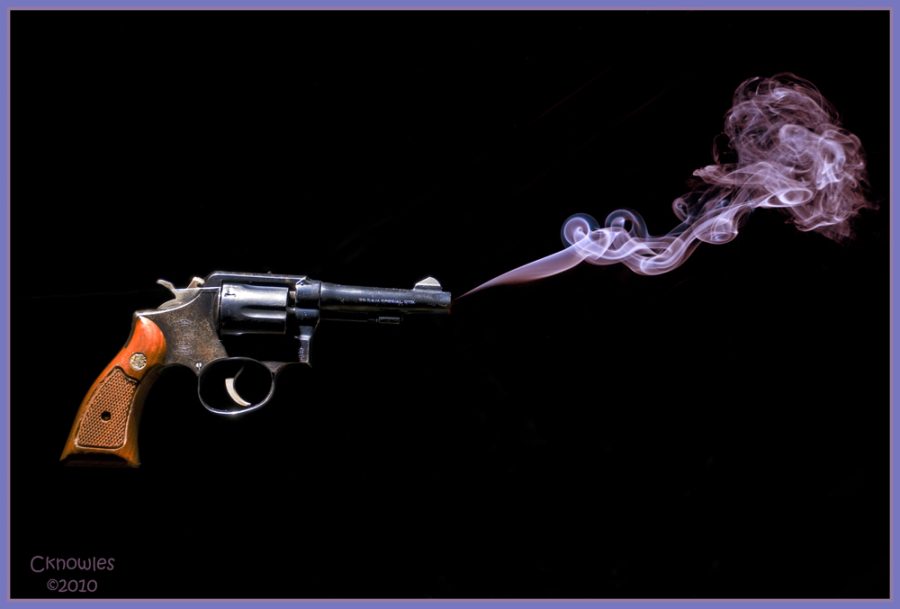Ghost Guns in the Hands of Children
February 16, 2022
Andy Greenberg proclaimed “no technical understanding of firearms,” but he still managed to construct a gun in less than a day.
The assembly took place in a backroom at his Wired magazine office in San Francisco. In his article, “I Made an Untraceable AR-15,” Greenberg fed aluminum to a $15,000 milling tool dubbed the “Ghost Gunner.” After a while, the machine churned out a mix of strange metal pieces. By themselves, the parts were useless. But after a few hours of tinkering, Greenberg had managed to piece together an operable AR-15, as if he were assembling a Lego kit.
What Greenberg built was a “ghost gun,” an untraceable, deconstructable firearm made from a series of parts. Although the sales of guns are strictly monitored in the US, trading the gun parts alone is entirely legal. Criminals have capitalized on this opportunity, creating a lucrative empire of off-grid ghost gun sales.
To understand how easy it is to procure such a weapon, I simply typed “ghost gun” into my Google search bar. The third result managed to pique my interest: Ghost Gun™. Judging the ™ to be a mark of reputability, I clicked and was immediately taken to a virtual bazaar of cheap, colorful gun parts. There were 3D-printed holsters, grips, and frameworks flaunted like a Wal-Mart discount sale. At that moment, I realized that the lucrative ghost gun market isn’t merely a physical, worldly problem; it lies in the Internet.
Purchasing a gun normally requires a number of credentials, licenses, and security checks. Internet sales, however, are not beholden to such restrictions. Gun-sellers can safely set up shop in “virtual safehouses” such as the Dark Web, even if their business may border on illegal. Gun-buyers, on the other hand, can easily conduct purchases behind fake accounts. The lack of proper online authentication opens the ghost-gun market to practically everyone. Even terrorists can buy firearms by hiding their identity behind a friend’s credit card.
Worryingly, recent years have seen a rise in adolescents frequenting the ghost-gun market and the culture of violence it promotes. Whether it be through YouTube or Reddit, any Internet browser provides a stream of carnage to any inquisitive kid. Consequently, the current generation of adolescents seems to be callous towards brutishness. Rather than being frightening, online violence tends to delight, amuse, or even bore kids nowadays. Many have joined the ghost-gun craze, disregarding the safety ramifications and moral implications of buying a firearm.
In February 2019, for example, a 17-year-old boy in Evansville, Indiana was charged for illegally owning a homemade Glock-17. The Columbia Daily Tribune reports that the boy (who remained anonymous) used his own debit card to buy a frame kit, bullets, and accessories from online marketplaces. The parts were then shipped home under his father’s name, who was unaware of the purchases. When questioned later, the boy said he purchased the gun to “protect himself.” Authorities quickly confiscated the weapon, preventing a potentially volatile outcome.
But as a New York Times article reports, 12-year-old Max Mendoza faced a different, more tragic fate. On the morning of July 3, 2021, Max’s parents awoke to the sound of gunshots downstairs of their California home. They quickly rushed down, to find Max sitting on the couch, clutching his bleeding chest. “It’s the real one. It’s the real one,” Max whispered.
Max was referring to the plasticky black-and-brown pistol that ended his life. Max’s friend had snuck over his new ghost gun, in order to brag about it during their sleepover. A few hours later, the gun would accidentally discharge, shooting Max.
In the case of the 17-year-old Indiana boy, the anonymity provided online allowed him to purchase the gun. In the case of Max Mendoza’s death, it was the Internet’s culture of violence that compelled his friend to brandish the gun as “cool.” Both instances showcase the danger adolescents face from ghost guns.
There is no easy way out of this problem. Simply sending the FBI to stamp out a few ghost gun traders will not solve the underlying issue. The source of the issue—the Internet—must be addressed.
However, this too, is not easy. We cannot just “destroy” the Internet, considering its daily global role in work, study, and communication. Hence, it comes down to improving security around Internet transactions and stemming the flow of violent information online. It is an arduous solution, which may ultimately fail.
But how many more kids will we let obtain a gun before something is done? How many more tragic deaths must we witness? Action needs to be taken on ghost guns now, to bring forth a better future.




















